We’ve spent a good amount of time this summer wandering around Southwest Friesland, where most of the 11 cities are also. The 3 towns north of the IJsselmeer that have fountains are Harlingen, Franeker and Dokkum (more about Dokkum later, but we won’t make it to H or F this summer).
We were headed for Stavoren, which is right on the coast of the lake called the “IJsselmeer”. The IJsselmeer is a massive inland bay which has been closed off by the “Afsluitdijk”, which is an enormous dyke that keeps the North Sea from flooding the country. The Dutch have spent countless amounts of money keeping this land that is under sea level from flooding, and in many cases creating new “polders” that become new towns for their population to live. David and I drove across the Afsluitdijk a few years ago, but the weather coming in from the North Sea prevented us from seeing anything but rough water on both sides and sideways rain in front of us.
Back to Stavoren… the reason we were on our way there is because our friend, Kathalijne, was visiting her mom in Stavoren. Kat lives in the Bay Area, and David and she have been friends for many years. She’s become a good friend of mine, and she’s Dutch. (She also really thinks it’s funny the way I say Dutch words.)
Our plan was to go to Stavoren via Workum (two of the 11 cities). As it turns out, our friend Lisa was also visiting Friesland from Luxembourg, because her partner is from here, so she and he came to Workum with their dog “Louis” (named after Pasteur – I love smart people). We devised a plan where Lisa and Louis would meet us in Stavoren, and do a quick cruise with us back up to Sneek.
Bolsward and the Hanseatic League
We stopped in Bolsward on the way to Workum. It’s a cute little town, and the only way to get there by boat is to wait for the low bridge to open. We arrived at bridge lunch break (12p-1p, and they take that thing seriously around here). It was Sunday when we grabbed a street side mooring, so there wasn’t much open. BUT, there is a fountain as Bolsward is one of the Frisian cities, and that fountain sits in front of the Broerekerk, which is a 13th century monastery church. The church was abandoned in 1578, served as a reformed church until 1970, and then caught fire in 1980. The building had gotten to the point where it needed to be taken down, but the mayor purchased the building and hired an architect to replace the roof. The replacement is beautiful, as it’s a full glass roof.
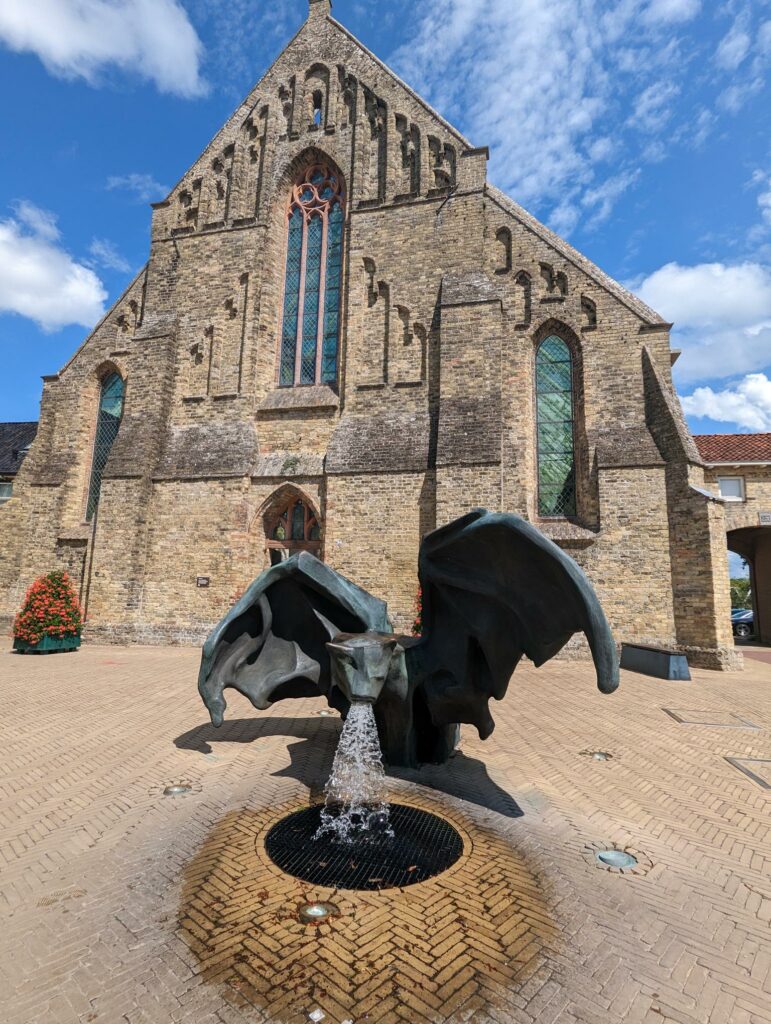
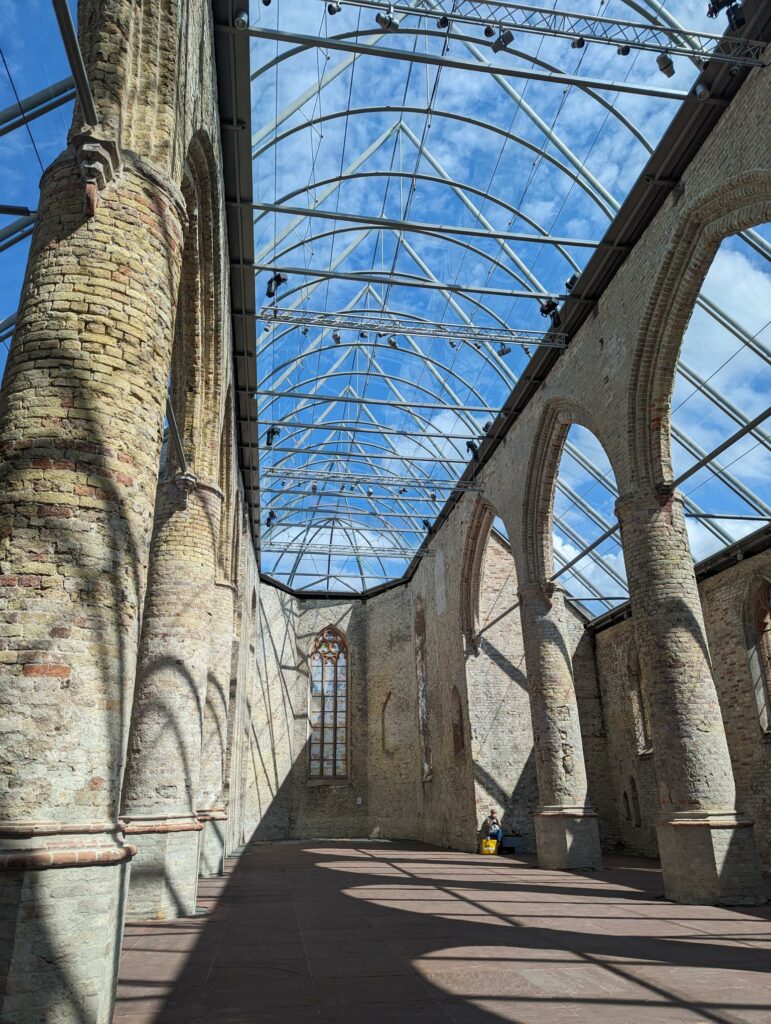
As usual, when traveling in Europe, I hear names and phrases that I remember hearing in European History in high school, but my short attention span kept me from really learning what it was all about. Being here, I’m piecing it all together (I’m more of a physical learner than a book learner anyway). The Hanseatic League was a confederation of merchants and towns across Poland, Germany and the Netherlands from the late 12th century to the 15th century, and encompassed approximately 200 settlements. As you can imagine, the Hanseatic League dominated maritime trade in the North and Baltic Seas, and I’m sure led to the Dutch ruling the oceans. More about that here (if you are so inclined to remember what you forgot from high school): https://en.wikipedia.org/wiki/Hanseatic_League
Workum if you Got ’em
Workum is a lovely city that is a short bike ride from the shores of the IJsselmeer. It received city rights in 1399, and is most famous for the Jopie Huisman museum. Workum has some beautiful hand carved/painted pottery from a multi-generational place (yes, we grabbed some). We were fortune to park right in front of the fountain.
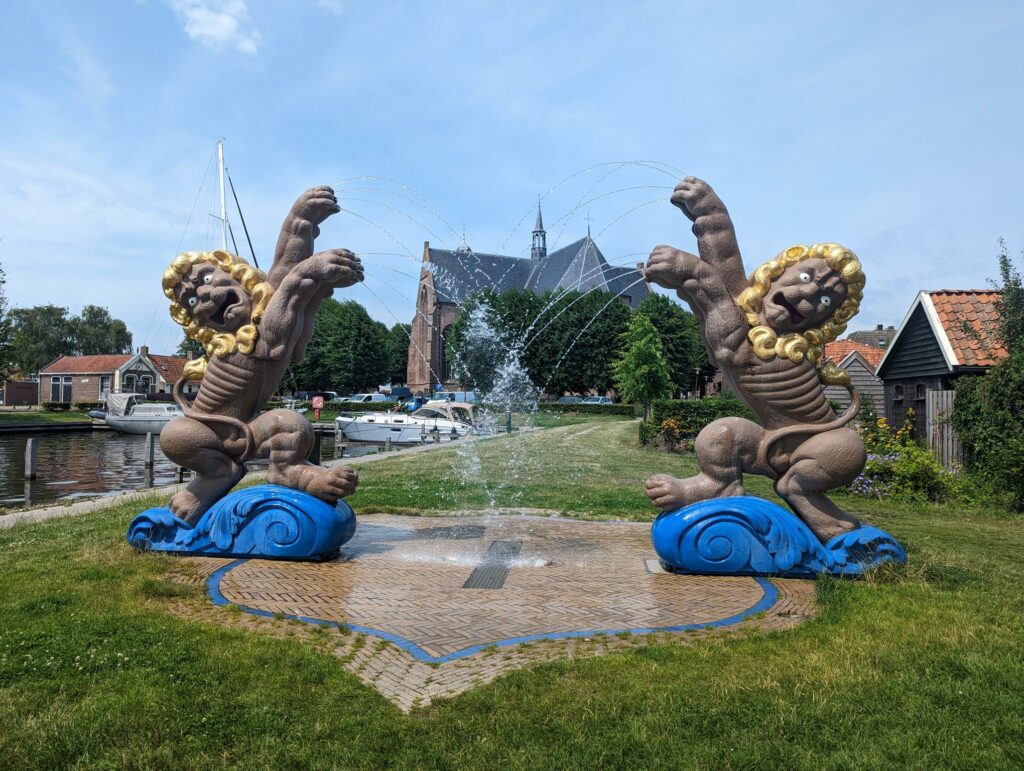
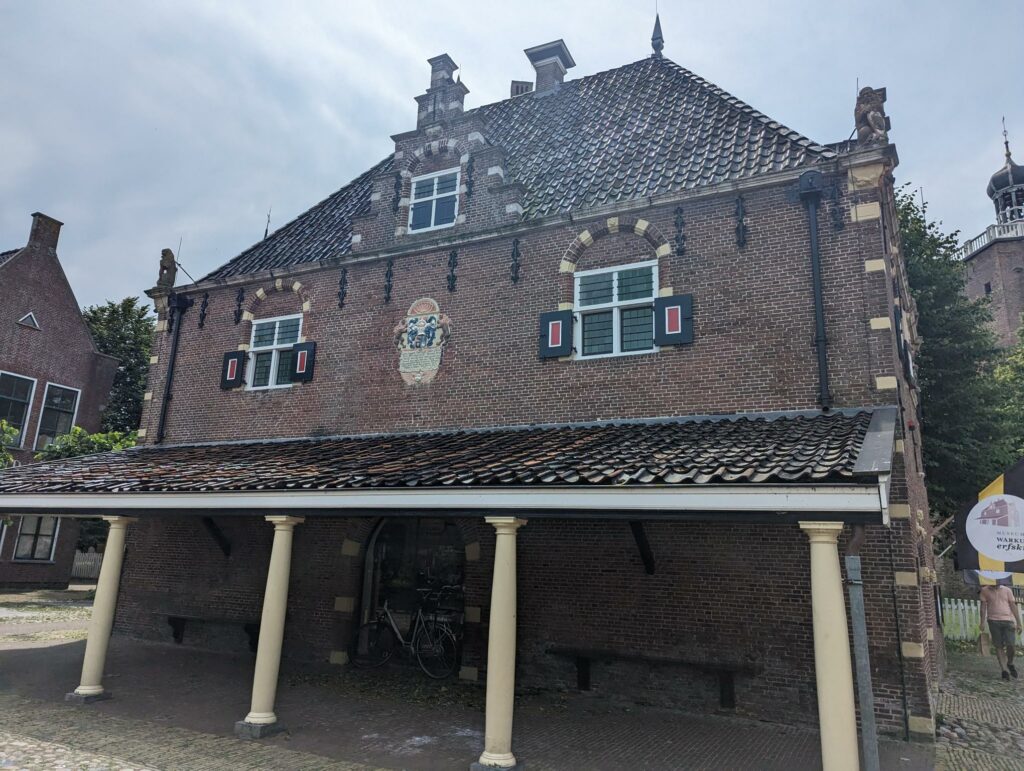
When Vince and Debby were here, we visited the history museum, which is inside the old weigh house. A lot of these old towns have medieval era weigh houses, for fish, eel, cheese, and other goods that were being traded. The guy managing the museum that day asked us if we wanted to see their town hall, so we had an amazing personal tour seeing where the mayor and the council have occupied the chambers for most of the last 400 years. There was also a number of small exhibitions showing the occupation of Netherlands by the Germans during World War 2, and just like France, they are very grateful to Americans for “saving” them.
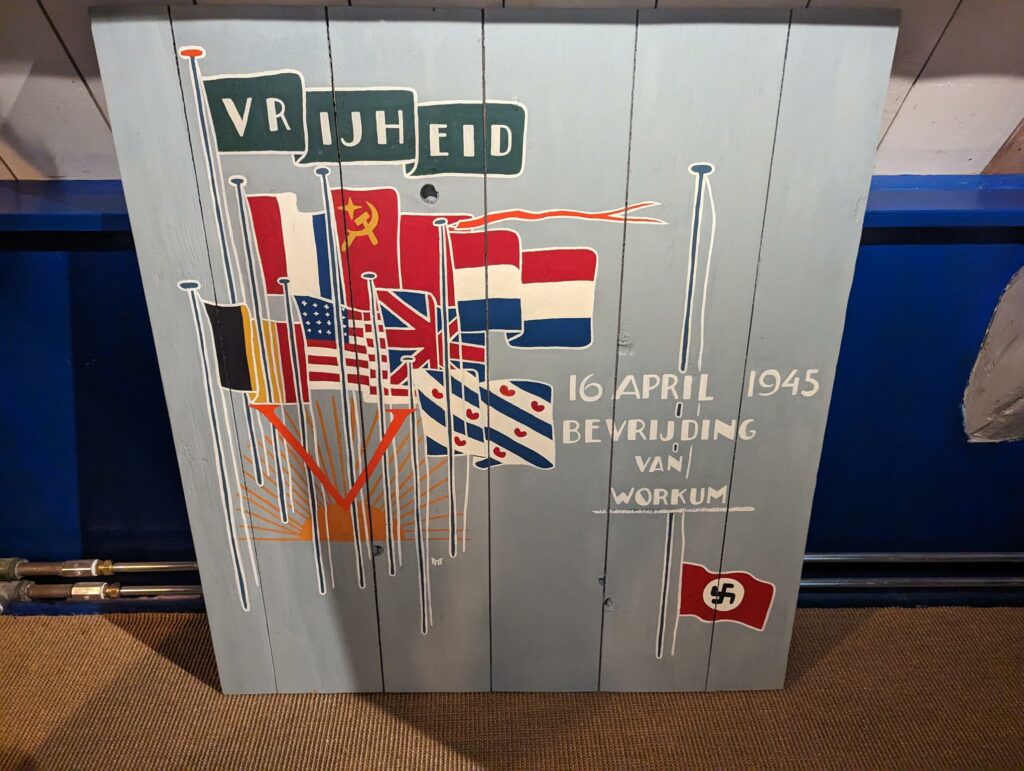
The Oldest City in Friesland
Finally, we made it to Stavoren. This city was granted rights between 1060 and 1067, and is the burial place of early Friesland Kings. Stavoren is a sweet small town right on the IJsselmeer, and it’s where we spent the weekend hanging out with our Bay Area friends.
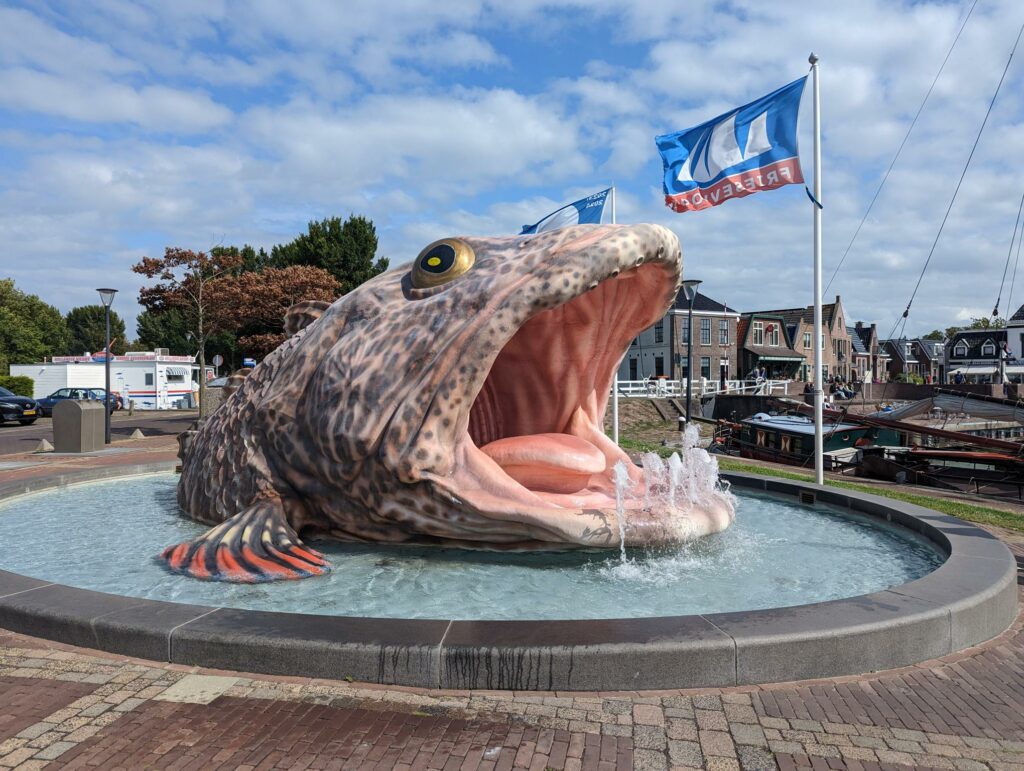
The Lady of Stavoren
(from Wikipedia) Now a village of just 1,000 inhabitants, Stavoren was once a wealthy port city in the Dutch province of Friesland but began to decline in the late Middle Ages after a sandbank formed outside the harbour, blocking ships from entering and exiting. Several stories have been told over the years to explain the forming of the sandbank, including the tale of the Lady of Stavoren.
The story, of which more than 27 versions are known, involves an exceedingly rich patrician merchant widow, who desired ever greater riches. She sent a captain of her merchant fleet out in search of the greatest treasure in the world. When he returned with wheat, declaring wheat to be “the most precious thing in the world,” as it can feed the hungry, the widow, in her overweening pride and anger at his (as she perceived it) foolishness, let the wheat be thrown overboard into the harbour of Stavoren.
When she was cautioned against this wicked behaviour, being reminded of the fickleness of fate and (despite her wealth and power) of the delicateness of her station, in hubris she took a ring from her finger and cast it into the ocean, declaring that she was as likely to fall into poverty as she was of regaining the ring.
Soon afterwards, during a banquet thrown for her fellow Hanseatic merchant princes, she finds the ring inside a large fish served to her. As this event portended, she lost her wealth, living out her remaining years in destitution, begging for scraps of bread. In divine retribution the port had silted, and the wheat that had been cast overboard now grew in the resulting sandbank that closed the harbour and ruined the city.
So… that explains the fish and the dainty lady statue.
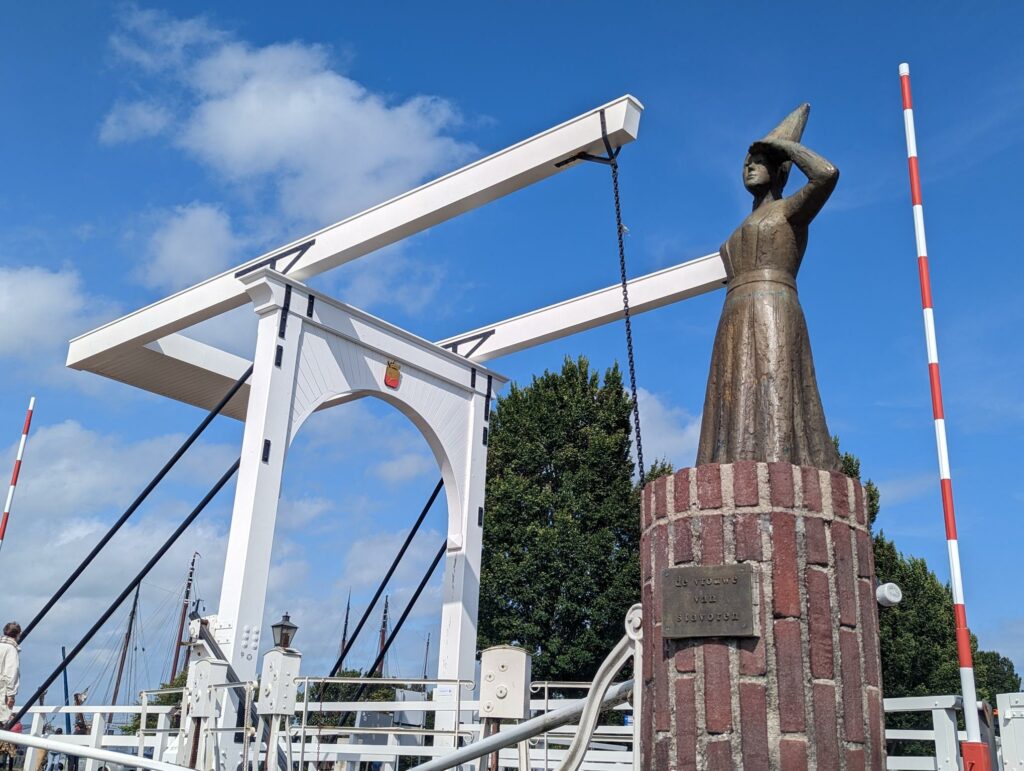

Sheep May Safely Graze (on the IJsselmeer)
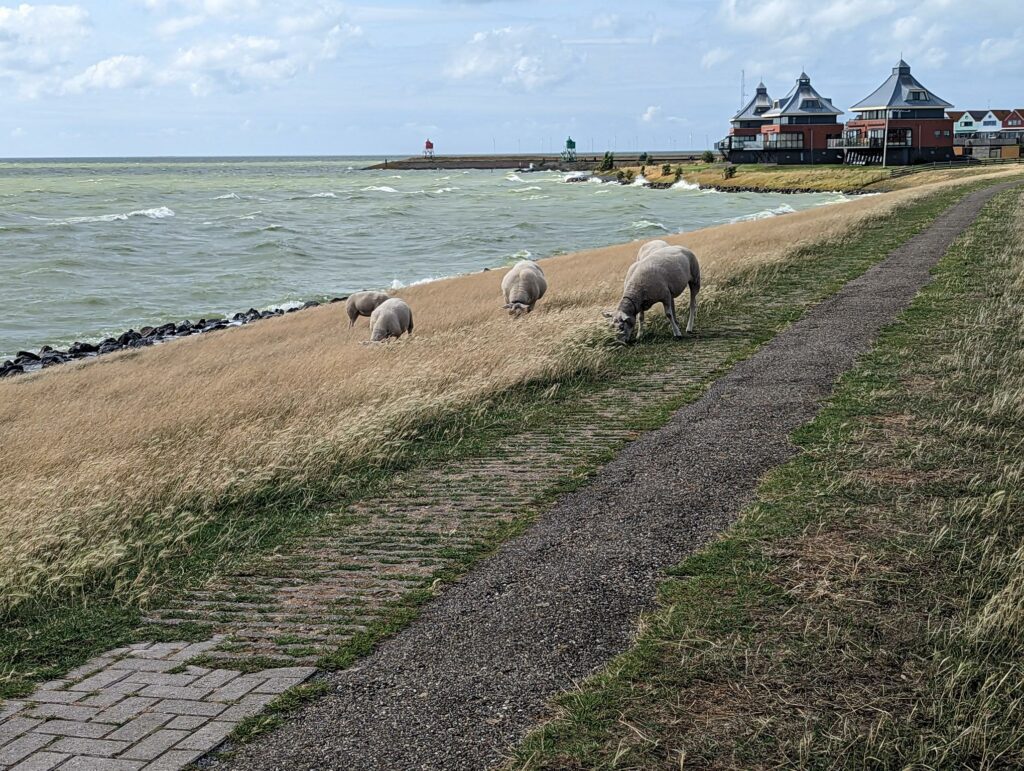
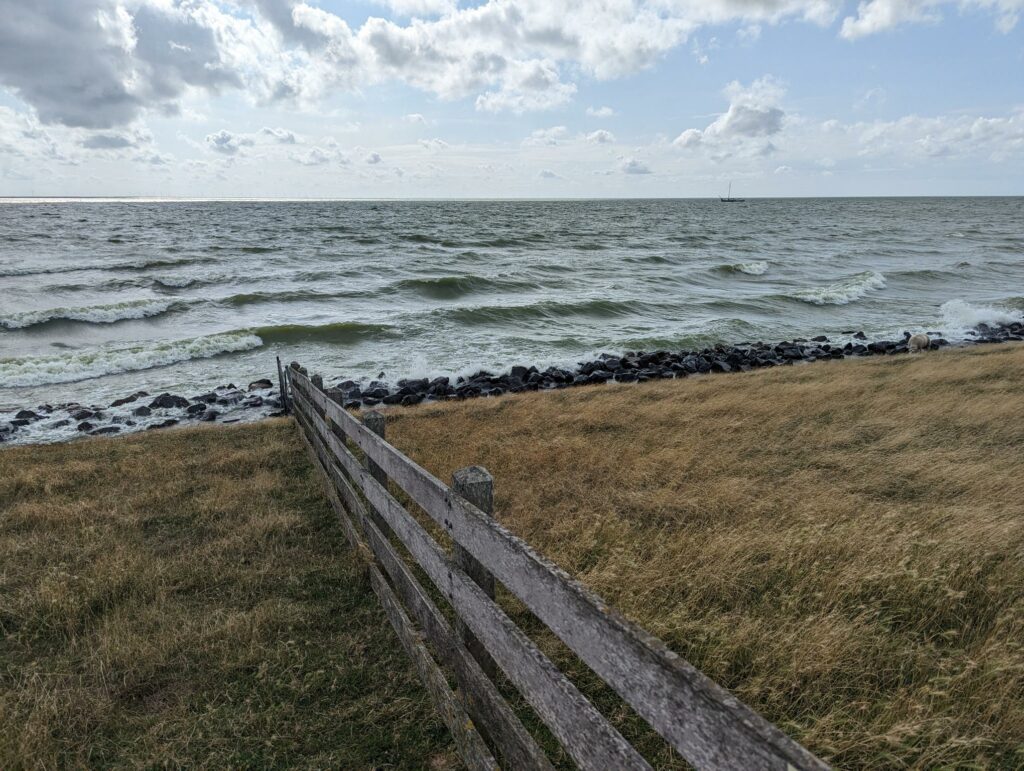
This is 53 degrees latitude in late July in the Netherlands. Cold, very very windy, and rough water. But, the sheep like it. And the cheese is excellent.
I’ve Got Friends in High Places
Finally, a photo of me and Lisa in Stavoren before we had off on our short cruise to Sneek. Lisa is a college friend of David’s from Boston – they both studied voice at Boston University. Lisa has had a fascinating life, and is now a full-fledged card carrying Luxembourg citizen, after learning Luxembourgish to pass her citizen test. I expect we will be seeing a lot more of Lisa in the coming years, either here or in Lux.
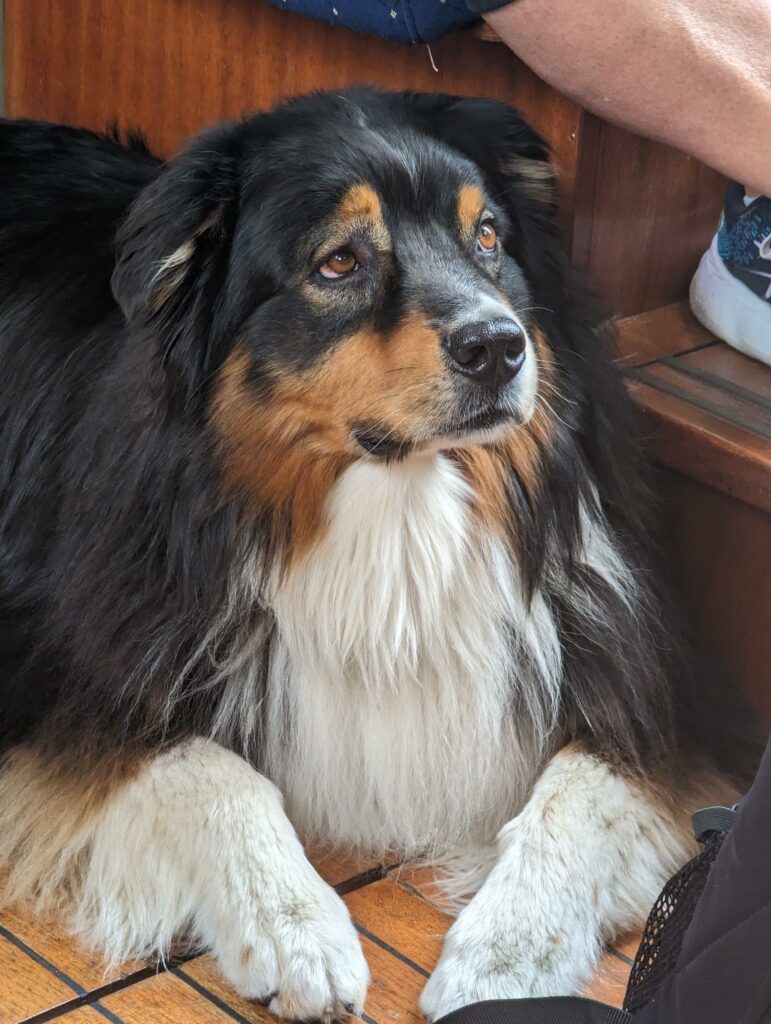
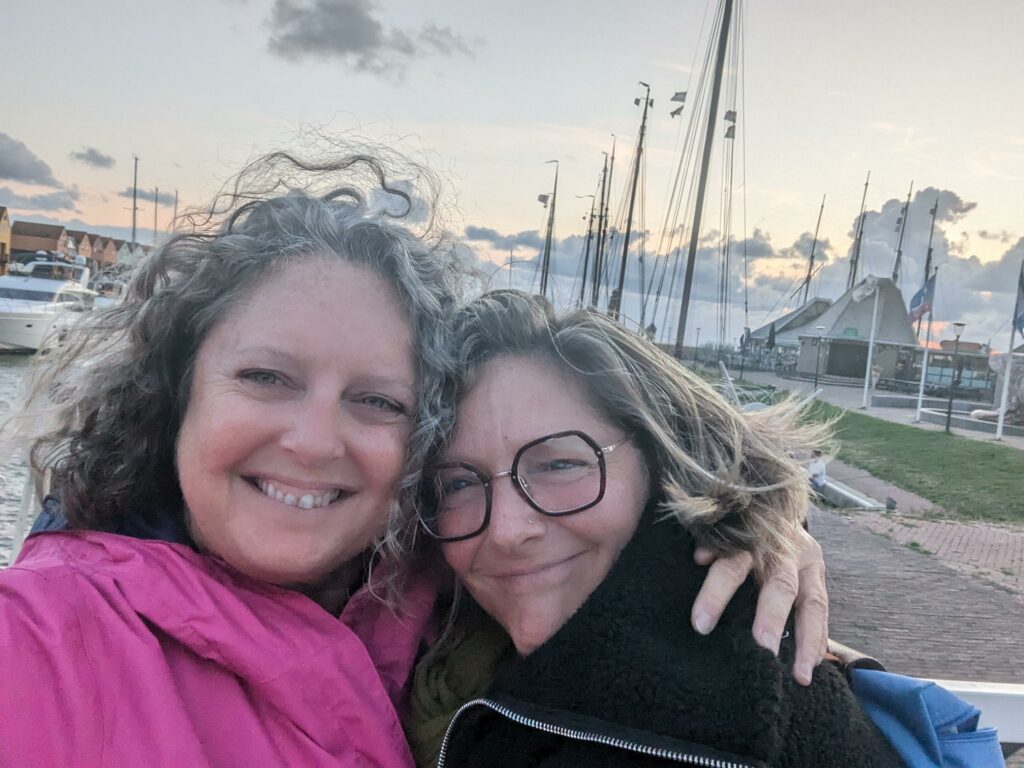

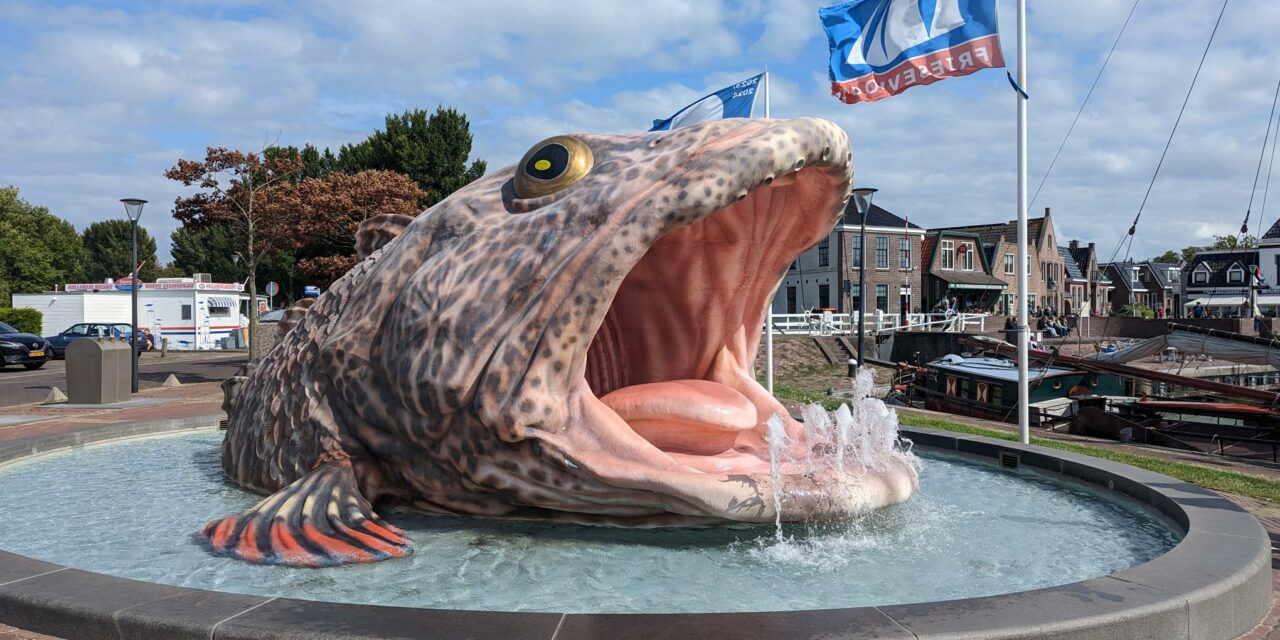
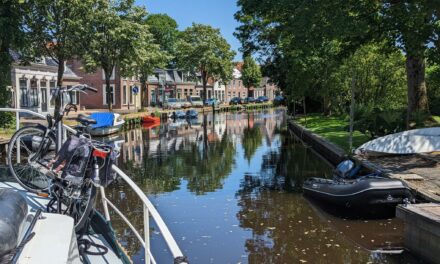
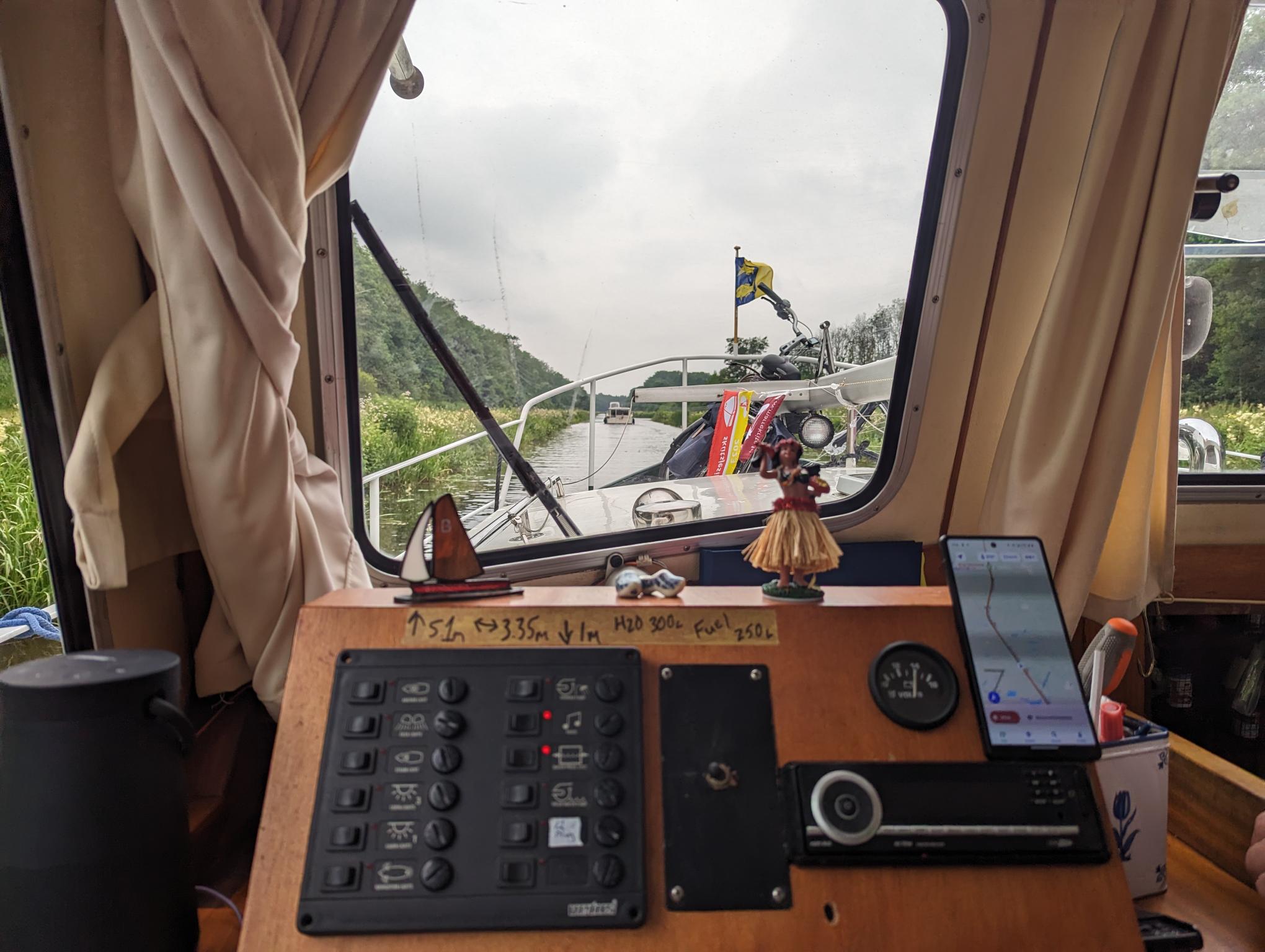
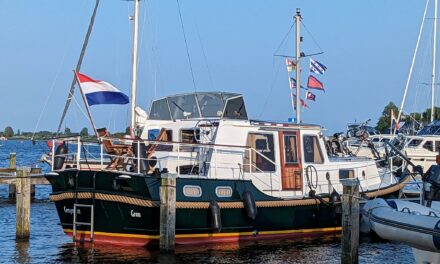
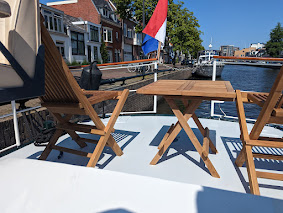
Recent Comments